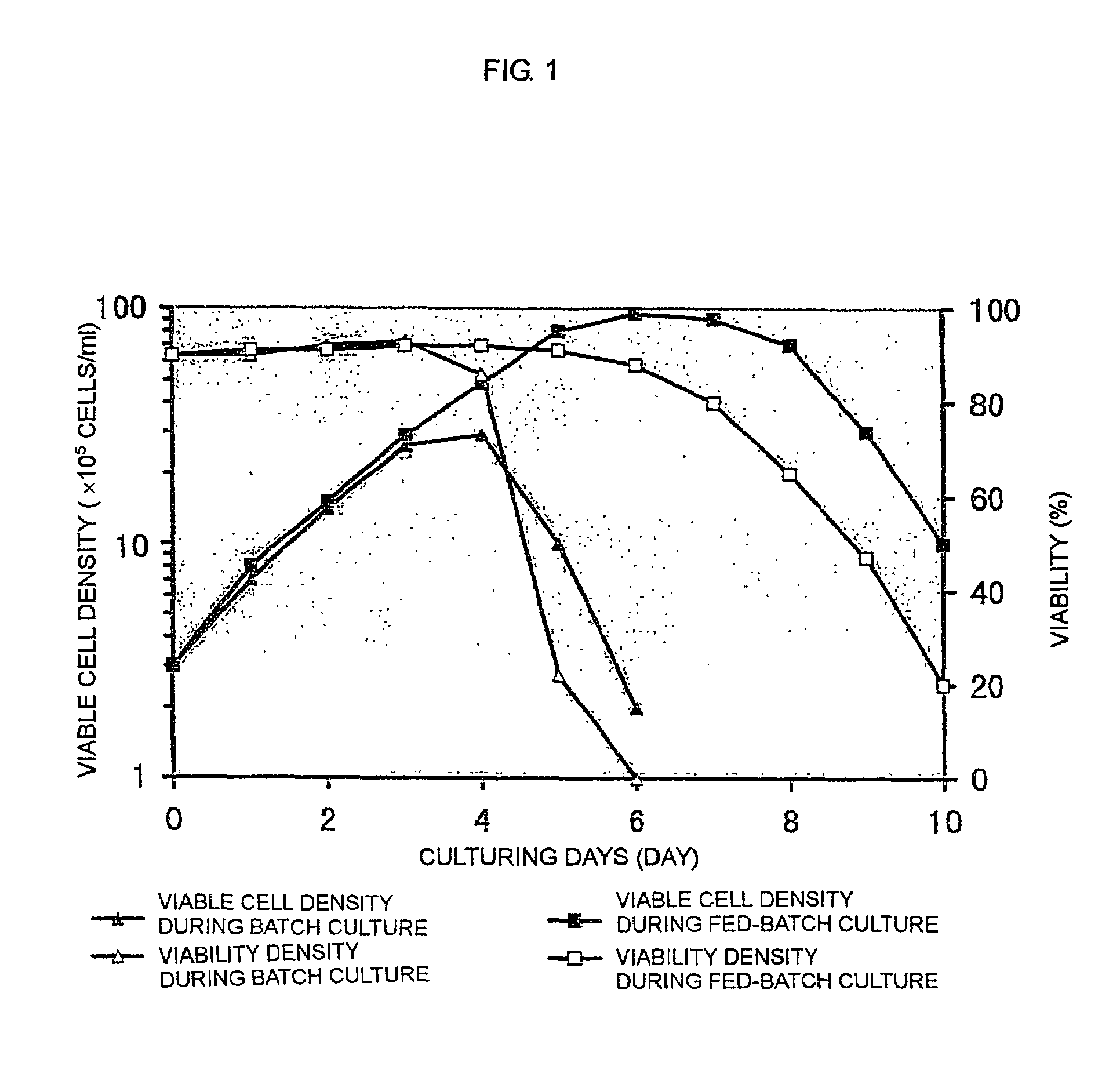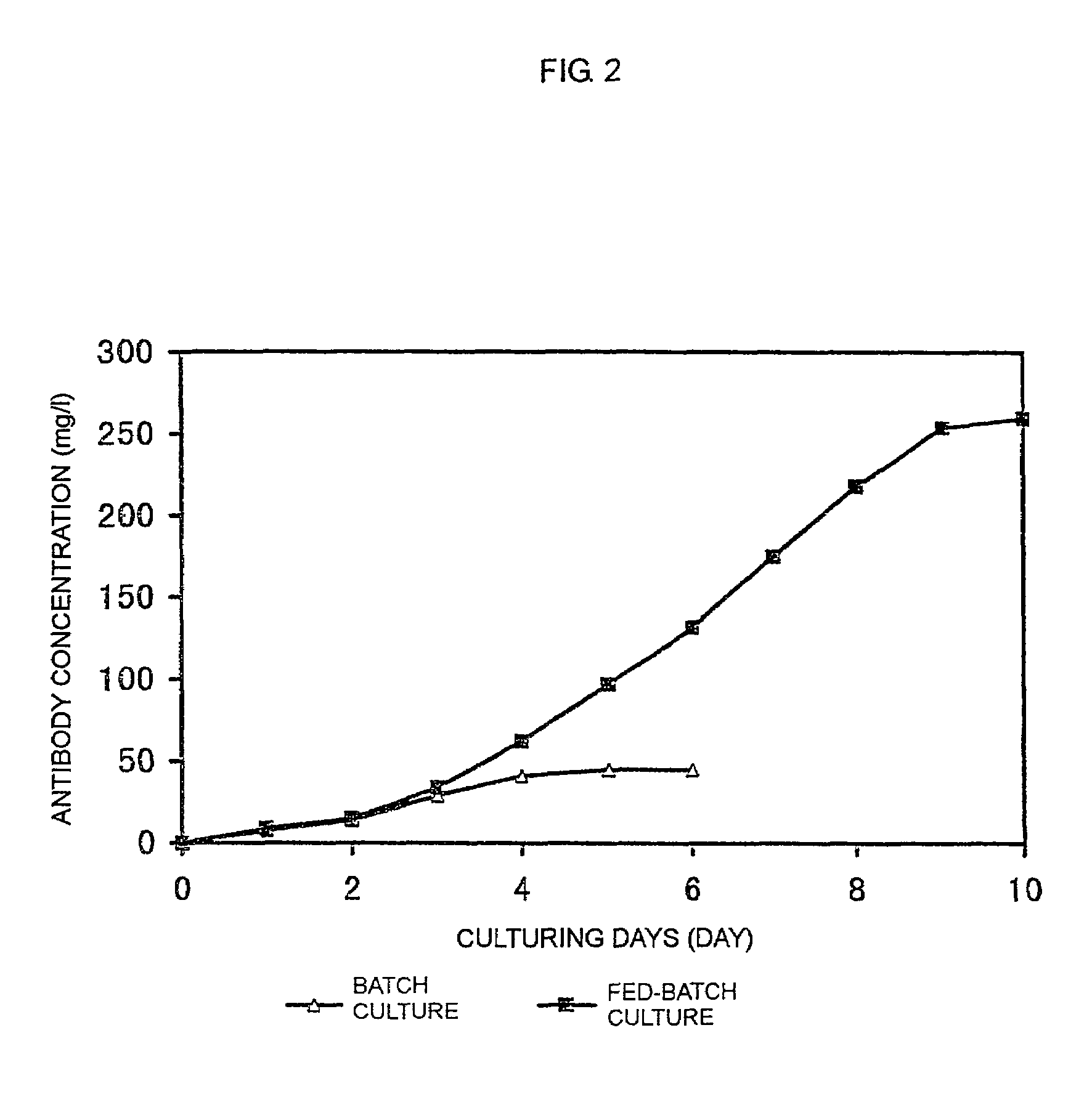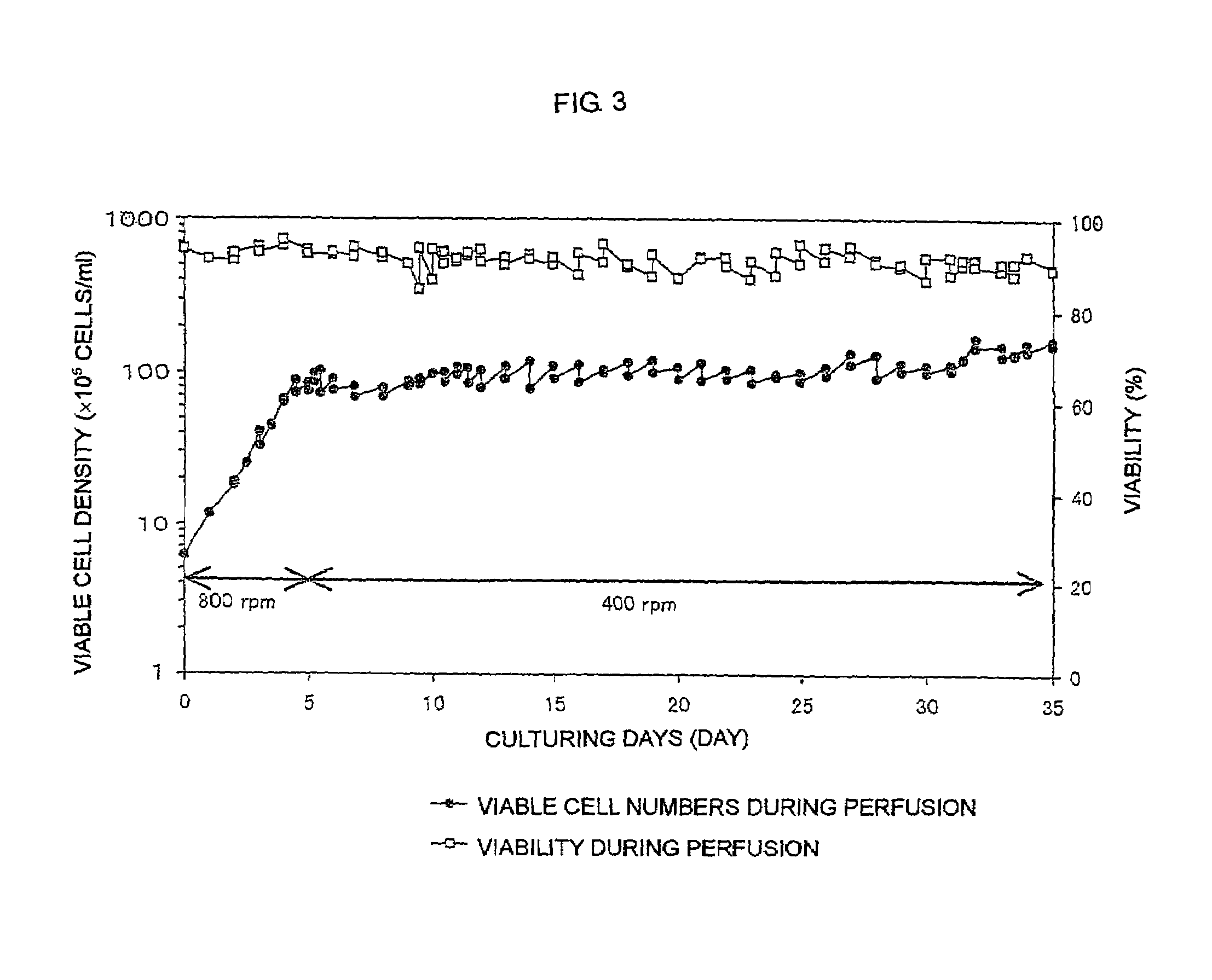Process for producing polypeptide
a polypeptide and cell technology, applied in the direction of peptides, immunoglobulins, fused cells, etc., can solve the problems of low cell growth rate and polypeptide productivity, affecting the yield of cells and the production of substances, and no report on a process for producing desired polypeptides stably for a long period of time. , to achieve the effect of high antibody-dependent cell-mediated cytotoxic activity
- Summary
- Abstract
- Description
- Claims
- Application Information
AI Technical Summary
Benefits of technology
Problems solved by technology
Method used
Image
Examples
example 1
Production of Anti-GD3 Chimeric Antibody
1. Construction of Tandem Expression Vector pChiLHGM4 for Anti-GD3 Human Chimeric Antibody
[0102]The expression vector pChi641LGM4 for L-chain of anti-GD3 chimeric antibody [J. Immunol. Methods, 167, 271 (1994)] was cleaved with restriction enzymes MluI (Takara Shuzo Co., Ltd.) and SalI (Takara Shuzo Co., Ltd.) to obtain a fragment of ca. 4.03 kb comprising the L-chain cDNA. Separately, the expression vector pAGE107 for animal cells [Cytotechnology, 3, 133 (1990)] was cleaved with restriction enzymes MluI (Takara Shuzo Co., Ltd.) and SalI (Takara Shuzo Co., Ltd.) to obtain a fragment of ca. 3.40 kb comprising the G418 resistance gene and the splicing signal. The obtained fragments were ligated using DNA Ligation Kit (Takara Shuzo Co., Ltd.) and Escherichia coli HB101 (Molecular Cloning: A Laboratory Manual, Cold Spring Harbor Lab. Press, New York, 1989) was transformed with the ligation product to construct plasmid pChi641LGM40.
[0103]The plasmi...
example 2
[0110]The anti-GD3 antibody-producing transformant clone 7-9-51 (FERM BP-6691) was adapted to a serum-free medium in the following manner. In all steps, culturing was carried out by static subculture in a T flask under the following conditions: temperature, 37° C.; CO2 concentration, 5%; amount of culture, 5 ml. When the cells were passaged, the whole culture liquor was replaced with a fresh medium by centrifugation.
[0111]FERM BP-6691 was inoculated into a serum-containing medium prepared by adding bovine serum albumin (BSA; JRH), insulin (Life Technologies, Inc.) and transferrin (Life Technologies, Inc.) to a basal medium for adaptation to serum-free conditions comprising IMD medium (Life Technologies, Inc.) and 200 nM MTX (Sigma Chemical Co.) at a cell density of 2 to 4×105 cells / ml, and subcultured (period for one passage: 2 to 4 days).
[0112]The cells obtained by the above subculturing were subcultured in a serum-containing medium prepared by adding 5% (v / v) γ-ray-irradiated dial...
example 3
[0119]Batch culture of FERM BP-7325 was carried out using a spinner flask containing a serum-free medium.
[0120]FERM BP-7325 was subjected to static culture using a T-225-cm2 flask containing 30 ml of a serum-free medium (Hybridoma-SFM; Life Technologies, Inc.) in a 5% CO2 incubator at 37° C. for 3 days. The resulting FERM BP-7325 was inoculated into 0.7 l of a serum-free medium (Hybridoma-SFM; Life Technologies, Inc.) in a 1-1 spinner flask (Shibata Hario Co., Ltd.) at a density of 3×105 cells / ml.
[0121]Culturing was carried out with stirring at 30 rpm while the pH of culture was controlled at 7.1±0.1 and the dissolved oxygen concentration was controlled at 5±0.2 ppm. Aeration was carried out by supplying a mixed gas of air, oxygen and carbon dioxide through a porous Teflon tube installed in the spinner flask. The pH was controlled by changing the ratio between air and carbon dioxide, and by supplying 1 M sodium carbonate solution. The dissolved oxygen concentration was controlled by...
PUM
| Property | Measurement | Unit |
|---|---|---|
| concentration | aaaaa | aaaaa |
| concentration | aaaaa | aaaaa |
| concentration | aaaaa | aaaaa |
Abstract
Description
Claims
Application Information
 Login to View More
Login to View More - R&D
- Intellectual Property
- Life Sciences
- Materials
- Tech Scout
- Unparalleled Data Quality
- Higher Quality Content
- 60% Fewer Hallucinations
Browse by: Latest US Patents, China's latest patents, Technical Efficacy Thesaurus, Application Domain, Technology Topic, Popular Technical Reports.
© 2025 PatSnap. All rights reserved.Legal|Privacy policy|Modern Slavery Act Transparency Statement|Sitemap|About US| Contact US: help@patsnap.com



